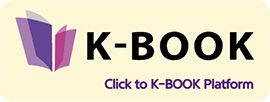|
The Online and Digital Marketing of South Korea's Publishing Industry Current status of online, digital marketing and actual cases
2017.8.18
Previously, marketing related to publishing was all done in-store. The most effective way to manage this was to place materials where people would most go and where their eyes would focus most inside a store. However like all other industries in this day and age, offline channels are losing their effectiveness and book reviews, which were one of the most effective ways to market books in the past, are also losing their influence in line with printed materials. As B2B, B2C out-bound marketing tactics no longer work as they used to, everyone is now thinking about what to do about content marketing. The publishing industry is no exception.
The Last book store
Give customers the experience they want
People often say the reason they buy books is in order to gain information from the books or to discover a different world. However, people don't buy books just to gain knowledge or feel emotions. Many readers actually buy books to tell themselves they 'possess' this book. What is as important to the public as the content in the books is the experience from the purchase. After they have a book in hand, they wish to share the experience with others. The perfect platform upon which to do this are social networking sites. By posting one line from a book or the title of a book, they can share their experiences with strangers or their acquaintances.
How to be discovered by consumers
In the case of movies, they attract the interest of possible moviegoers even before the movie is on the screen through previews, character introductions, interviews and still cuts from the movie. Thanks to these efforts, we naturally see the public sharing their experiences on social networking sites after watching the movies.
Success cases in publishing marketing
Case 1. One line in a book, and Changbi A mobile application and Facebook page called 'A Line in a Book' were created around 2011 and 2012. In the early stages, all that was done was copy-pasting one or two lines from books onto those platforms. It was short and easy to access, but readers failed to show a special reaction to that content. What the public wanted was a story they might have already experienced, or could experience -- not just a random line from a book.
Case 2. Podcasts and bookteasers Podcasts and bookteasers are two other publishing marketing techniques that stress storylines or emotions through video and sound than just text from books, directly approaching readers. A leading podcast channel for books would be “Lee Dong-jin's Red Bookstore”. Podcasts are popular among readers as they allow today's public to read books in a different way in their busy lives. Listeners can listen to books through podcasts as they would music. Also, for readers who have read books for a long time, podcasts also bring up memories of the past when other people used to read to them.
Case 3. Economics of a strange world The marketing for Economics of a Strange World that was published in 2012 combined the best of the marketing techniques seen above. The publisher for this book created infographics for the book. These days, many publishers turn to infographics before a new book release, but at this time, there was no other infographic that whetted the curiosity of readers like this one. For example, it asked readers, "The money from an iPhone you purchased, where did that money go?" The facts below would tell readers the answer through a chart or graph.
Case 4. Drama product placement Books can become bestsellers through drama product placement. The Miraculous Journey of Edward Tulane kept firm on bestsellers lists for an extended period of time after it was featured in the Korean drama, My Love From a Star. It stayed there long after the drama ended. One Stormy Night, a story about the friendship between a wolf and a goat, and La Vie Devant Soi by French writer Emile Ajard received fresh attention after they were also featured in Korean television dramas.
Case 5. Social media flashcard news The flashcard news format can be seen on Facebook in South Korea quote often. It is useful in the fact that viewers can quickly go through content, but much effort is required to fill the space with images where text can't, so at times, its effectiveness compared to the effort that is taken is questioned. However, those into book marketing should take a look at the Internet social networking accounts of 'Passionoil' that has used this format quite effectively. They use the flashcard format quite readily and with images and short sentences, they deliver the core message of books with 25 to 30 cards. They draw out the participation of Facebook users by delivering emotions rather than information.
Written by Jeong-hwa Ryu (Head of Contenta) Jeong-hwa Ryu (Head of Contenta) |
Pre Megazine
-

Review of Seoul International Book Fair 2017
VOL.1
2017.06 -

Visiting Book Fair Thailand 2017
VOL.1
2017.06 -

Translated and Published in Taiwan, Meet Chin-Myong Kim's THAAD
VOL.1
2017.06 -

Independent Publishing
VOL.2
2017.07 -

A Korean Publisher Growing With the World
VOL.2
2017.07 -

Gilbut Children
VOL.2
2017.07 -

Character Licensing Fair 2017
VOL.2
2017.07 -

The Online and Digital Marketing of South Korea's Publishing Industry
VOL.3
2017.08 -

Golden Bough
VOL.3
2017.08 -

Black Forest
VOL.3
2017.08 -

2017 Korea Book Fair in Vietnam
VOL.3
2017.08 -

Ji-hyeon Lee's Pool
VOL.3
2017.08 -

Characteristics of South Korean Web Novel Platforms and Ventures Overseas
VOL.4
2017.09 -

Publishing Educational Materials for 40 Years “Darakwon”
VOL.4
2017.09 -

Leading the Popularization of Art “Art Books”
VOL.4
2017.09 -

South Korea to Participate in 2017 International Istanbul Book Fair as Guest of Honor
VOL.4
2017.09 -

Haemin Sunim's The Things You Can See Only When You Slow Down
VOL.4
2017.09 -

The Present and Future of South Korea's "Screensellers"
VOL.5
2017.10 -

Humanist Books
VOL.5
2017.10 -

Dolbegae
VOL.5
2017.10 -

The 2017 Guadalajara International Book Fair
VOL.5
2017.10 -

Interview with You-jeong Jeong
VOL.5
2017.10 -

South Korea's Translated Literature Awards, Where Are They Now?
VOL.6
2017.11 -

UU Press
VOL.6
2017.11 -

Risu·Reading Cat Publishing Company
VOL.6
2017.11 -

Asian Publishers Fellowship Program in Seoul 2017
VOL.6
2017.11 -

Interview with author Soon-won Lee
VOL.6
2017.11 -

10 Keywords: South Korea's publishing industry in 2017 at a glance
VOL.7
2017.12 -

"NexusBOOKS"
VOL.7
2017.12 -

"SangSang Publications"
VOL.7
2017.12 -

2017 Bookstore Day
VOL.7
2017.12 -

Interview with Mi-kyoung Song
VOL.7
2017.12 -

Trends and news in South Korea's book design
VOL.8
2018.01 -

Agencies talk actual copyright export cases
VOL.8
2018.01 -

Daewon CI
VOL.8
2018.01 -

K-Books Blossoming in Central America
VOL.8
2018.01 -

Interview with author Jung-hyuk Kim
VOL.8
2018.01 -

Book Factory Dubulu
VOL.9
2018.05 -

Yaong Seoga
VOL.9
2018.05 -

Where Books and People Become Closer
VOL.9
2018.05 -

Interview with author Kim Tak-hwan
VOL.9
2018.05 -

Book Ecosystem Vision Forum - the 3rd
VOL.10
2018.06 -

The Birth of Publishing Company ‘BookGoodCome’
VOL.10
2018.06 -

Diverse Ways to Love Books
VOL.10
2018.06 -

Ha Seong-Ran, An Author Ready to Talk
VOL.11
2018.07 -

2018 Seoul International Book Fair ‘New Definition’
VOL.11
2018.07 -

GOZKNOCK ENT
VOL.11
2018.07 -

South Korea’s Literary Awards
VOL.11
2018.07








